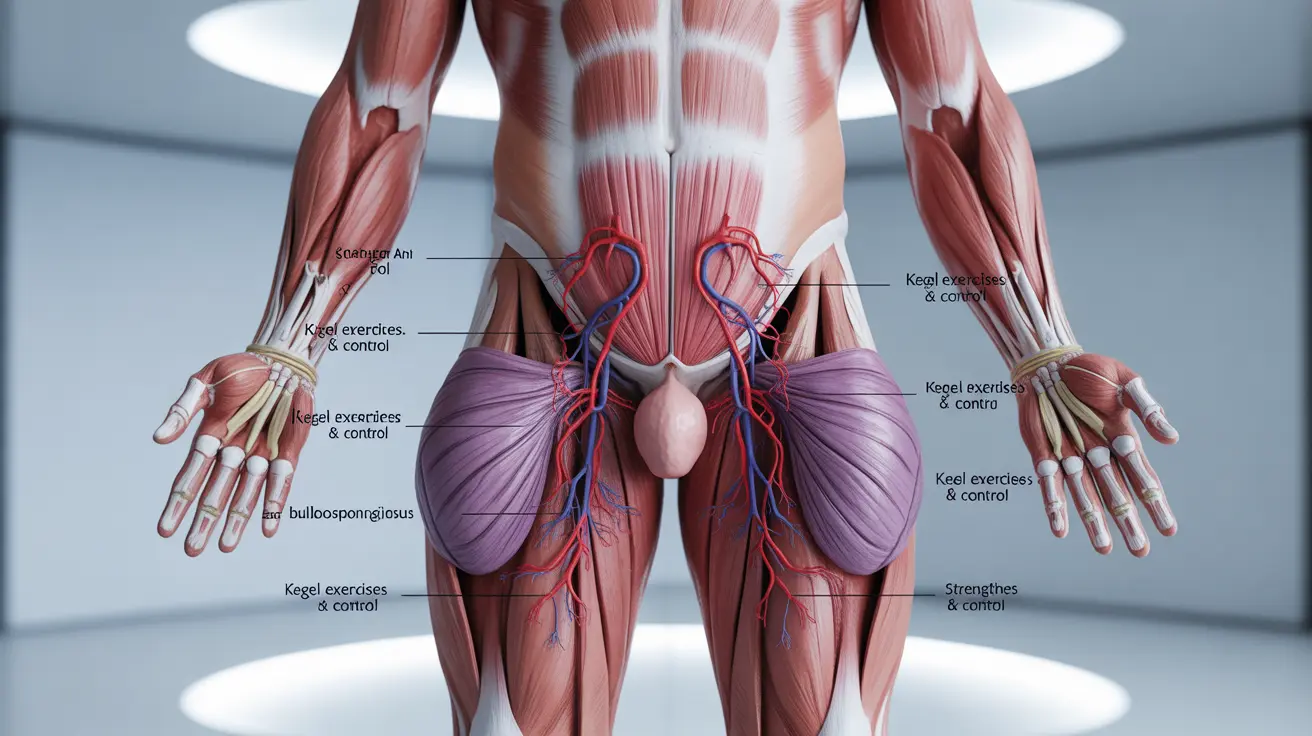Maintaining healthy blood flow to the penis is crucial for sexual health and erectile function. While various treatment options exist, natural exercises can effectively improve circulation and strengthen the muscles involved in achieving and maintaining erections. This guide explores evidence-based exercises that can enhance penile blood flow naturally and safely.
Understanding Penile Blood Flow and Exercise Benefits
Blood flow to the penis relies on a complex interaction between the cardiovascular system, pelvic muscles, and nervous system. Regular exercise can improve this circulation by strengthening blood vessels, increasing nitric oxide production, and enhancing overall cardiovascular health. Additionally, specific targeted exercises can directly benefit erectile function by strengthening key muscle groups.
Effective Pelvic Floor Exercises
Pelvic floor exercises, also known as Kegel exercises, are fundamental for improving erectile function and blood flow. These exercises target the muscles that help control erections and support proper blood circulation in the pelvic region.
How to Perform Kegel Exercises Correctly
To perform Kegel exercises effectively:
- Identify the correct muscles by stopping urination midstream
- Contract these muscles for 5 seconds
- Release for 5 seconds
- Repeat 10-15 times per set
- Perform 3 sets daily
Consistency is key when practicing these exercises. Results typically become noticeable after 4-6 weeks of regular practice.
Cardiovascular Exercises for Better Blood Flow
Aerobic exercises are essential for improving overall circulation and cardiovascular health, which directly impacts penile blood flow. Regular cardio workouts can help:
- Improve heart health
- Enhance blood vessel function
- Increase nitric oxide production
- Reduce stress levels
- Maintain healthy body weight
Recommended Cardio Activities
The following activities are particularly beneficial:
- Brisk walking (30 minutes daily)
- Swimming
- Cycling (avoid hard seats that may compress perineal arteries)
- Running
- Dancing
Yoga and Stress Management
Yoga combines physical postures with breathing techniques and meditation, offering multiple benefits for erectile function and blood flow. Certain poses specifically target pelvic blood flow while helping reduce stress, which can significantly impact sexual function.
Beneficial Yoga Poses
Include these poses in your routine:
- Cobra pose
- Bow pose
- Seated forward bend
- Child's pose
- Bridge pose
Frequently Asked Questions
How can I increase blood flow to my penis naturally through exercise?
Regular cardiovascular exercise, pelvic floor exercises, and yoga can naturally increase blood flow to the penis. Aim for at least 30 minutes of moderate-intensity aerobic activity daily, combined with regular Kegel exercises and stress-reducing activities like yoga.
What are the benefits of pelvic floor exercises for treating erectile dysfunction?
Pelvic floor exercises strengthen the muscles that help maintain erections, improve blood flow to the pelvic region, and enhance erectile function. Regular practice can lead to better erectile control and stronger erections.
Can regular aerobic exercise like running or cycling help improve erectile dysfunction symptoms?
Yes, regular aerobic exercise improves cardiovascular health, enhances blood circulation throughout the body, and increases nitric oxide production, all of which contribute to better erectile function and reduced ED symptoms.
How does yoga and stress management impact erectile dysfunction treatment and prevention?
Yoga and stress management techniques help reduce anxiety and tension, improve blood flow, and balance hormones. These benefits can significantly improve erectile function and help prevent ED related to stress or anxiety.
Are pelvic floor exercises, such as Kegel exercises, an effective long-term solution for managing erectile dysfunction without medication?
While pelvic floor exercises can be highly effective for managing ED in many cases, their effectiveness as a standalone treatment varies by individual. They work best as part of a comprehensive approach including cardiovascular exercise, stress management, and healthy lifestyle choices.




